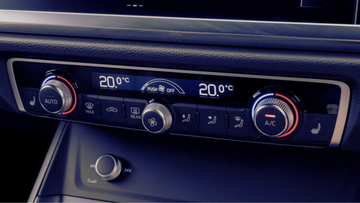
As temperatures climb this summer, it’s essential to keep your passengers comfortable with either air conditioning or climate control—but do you know the difference between the two? If not, this blog is here to help. We’ll break down what air conditioning and climate control are, how they operate, and which one might be the best fit for your vehicle.
Air Conditioning
What is it?
Air conditioning in cars was first introduced by The Packard Motor Company in 1939. By the 1970s, nearly half of all new cars came equipped with air conditioning as a standard feature. The basic principles of air conditioning have remained largely unchanged since then, relying on three key components: the compressor, condenser, and evaporator.
How Does it Work?
The system circulates refrigerant through a closed-loop, where it transitions from gas to liquid and back again. The compressor, powered by the car's engine, drives the refrigerant into the condenser, where it cools and transforms into a high-pressure liquid. The receiver-dryer then removes moisture before the refrigerant passes through the thermal expansion valve and into the evaporator. Inside the vehicle, the evaporator converts the refrigerant back into a gas, which is then blown into the cabin by a fan, cooling the interior.
Concerned about your air conditioning? Consider booking a recharge and service with us. For more details on how air conditioning works, check out our blog post "Everything You Need to Know About Air Conditioning in Your Car."
Climate Control
What is it?
Climate control is a more advanced system compared to traditional air conditioning. It allows drivers and passengers to set and maintain a precise interior temperature automatically, without the need for constant adjustments.
How Does it Work?
The system uses multiple sensors to monitor the temperature inside the vehicle, adjusting the amount of warm or cool air being circulated to maintain the user’s desired setting. It can also modify fan speed and switch between fresh and recirculated air to keep the cabin comfortable. Some modern vehicles even offer dual or multi-zone climate control, allowing different areas of the car to be set at varying temperatures—a great feature for keeping everyone happy.
Key Differences
Air conditioning is simpler and requires manual adjustments to regulate the temperature, while climate control offers automatic, precise temperature management. This makes climate control more user-friendly and safer, as it minimises distractions while driving.
Choosing the Right System for You
The type of cooling system available depends on your vehicle’s make and model. Newer and higher-end vehicles often come equipped with climate control as a standard feature. If you frequently drive in hot climates or spend extended periods in your car, climate control could be a worthwhile investment. Not only does it offer added convenience, but it can also enhance your car’s resale value.
